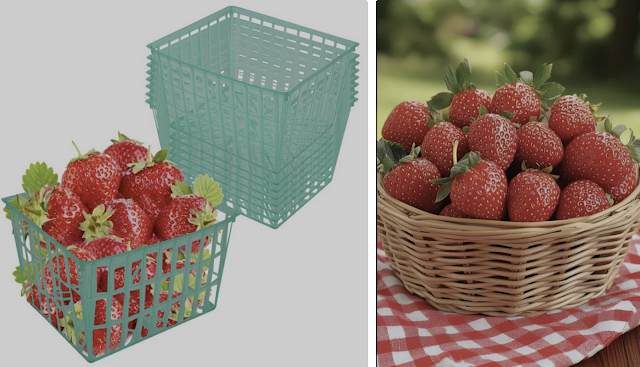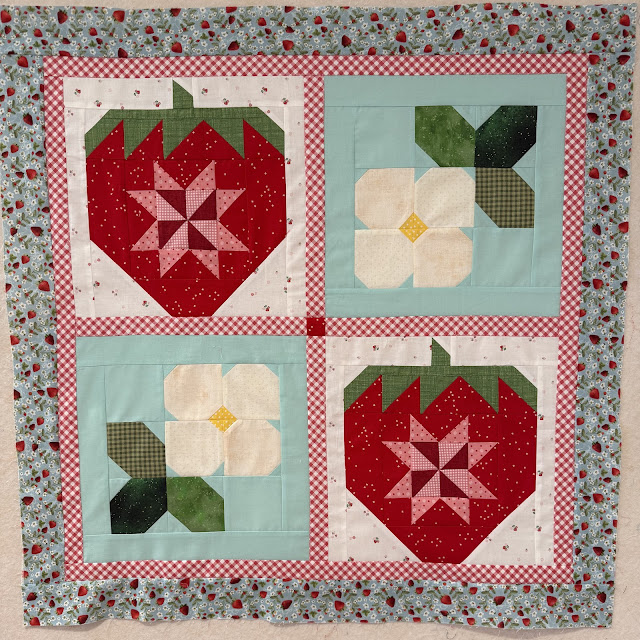The Pieceful Patchwork kit by Shabby Fabrics for June showcases strawberries and strawberry blossoms. This is a fun, moderately-sized (31"x31") project that gave me a great break and palette cleanser from making larger quilts. The fabric choices in the kit were very cheerful and germane to the theme. The white background has teeny strawberries on it. The red for the bulk of the strawberry has tiny white random spots, like seeds. The central star block was fun to do. The jagged green leaves facing different directions at the top kept me engaged and on my toes to face them correctly.
DianeLoves2Quilt
Tuesday, July 8, 2025
June Strawberries
Saturday, June 21, 2025
Make it Merry Month Two
In Month Two the assignment was to make four Block #2's and four Block #3's and once again I enjoyed every minute of it. I cut out the fabric for the Block #2's and assembled them before cutting out the fabrics for the Block #3's. This divide and conquer method was soothing and not at all stressful or confusing.
These are my four Block #2's. Making flying geese is not onerous when sewn orderly eight at a time.
Here are my four Block #3's. The method of making those QST's for the star points worked out really well. They were made a bit oversized and then trimmed down symmetrically, carefully centering the mid point.
The eight blocks from Month Two, similar to the eight blocks from Month One, are not at the very center of the quilt. Can you find the location of those eight Month Two blocks? Hint: each set of four is positioned at corners.
Subscribe to:
Posts (Atom)












